Yes, we have lions in India. Yes, they’re in the wild, not in a zoo and no, they’re not ‘imported’ from Africa. Answers to the most frequently asked questions about India’s very own Asiatic Lions. Many assume that lions are only found in Africa but in the state of Gujarat we have 600+ wild Asiatic Lions, making India the only country outside of the African continent to have these majestic cats.
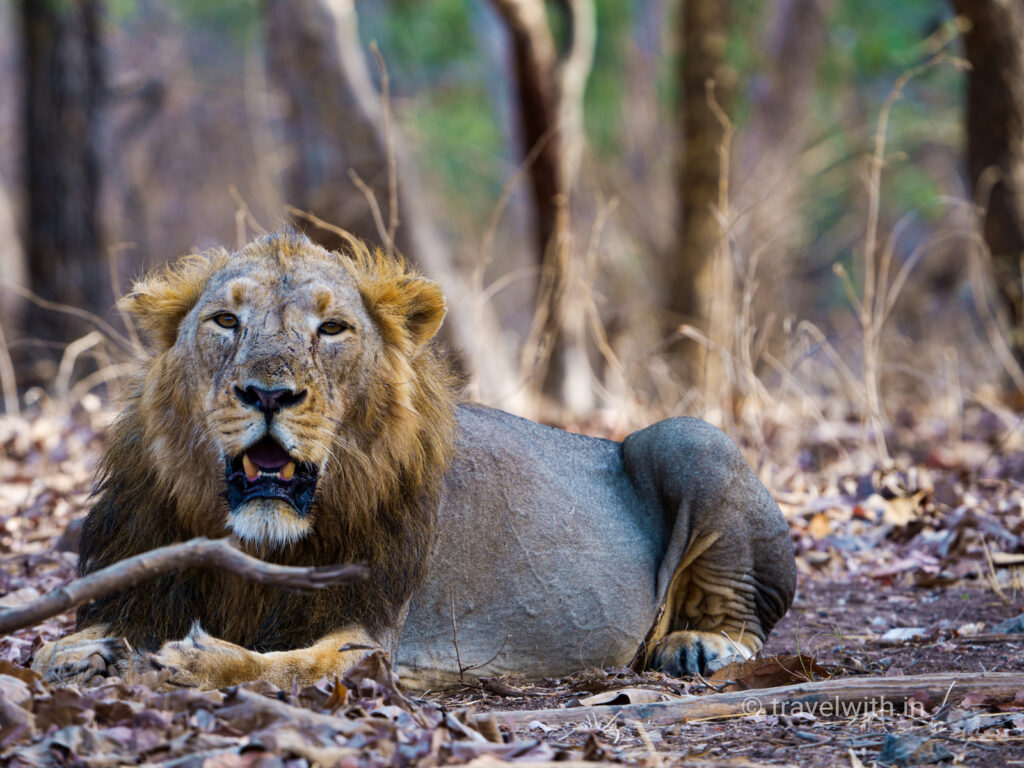
An older male Asiatic Lion
Till the early 19th century, it is believed that Asiatic lions were found all the way from Palestine to the Indian sub-continent. Rampant trophy hunting and disease led to a sharp fall in the Lion’s numbers so much so that today they are only found in one state in India and no where else in Asia.
Thanks to early intervention by the Nawabs of Junagadh starting with Nawab Rasulkhanji in 1900s, the remaining lions were given protection by transferring revenue land to forest land, restricting hunting and other such measures. Along with the Nawabs of Junagadh, the principalities of Baroda and Bhavnagar which also had lions started protecting the last remaining lions in their districts.
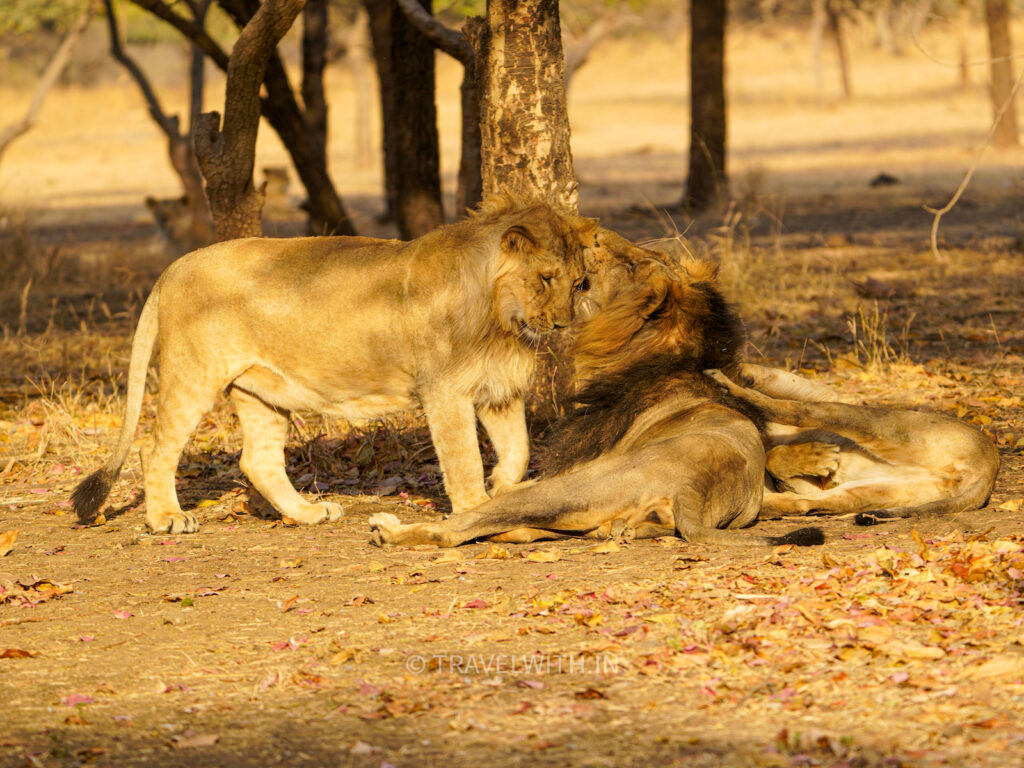
Pride of Asiatic Lions

Nawab Rasulkhanji, Story of Asiatic Lions by Divyabhanusinh
It is believed that the current population of 600 lions in Gujarat are the off-springs of a handful, the last few lions that were left in the wild when hunting was controlled in the early 20th century.
Another FAQ is how does the Asiatic lion differ from it’s African counterpart. One of the key differences is the belly fold of loose skin in the abdominal region. This belly fold is strikingly visible in the Asiatic lion and not so much in the African. According to scientific research the abdominal fold in the Asiatic lion is mostly the result of inbreeding over time.
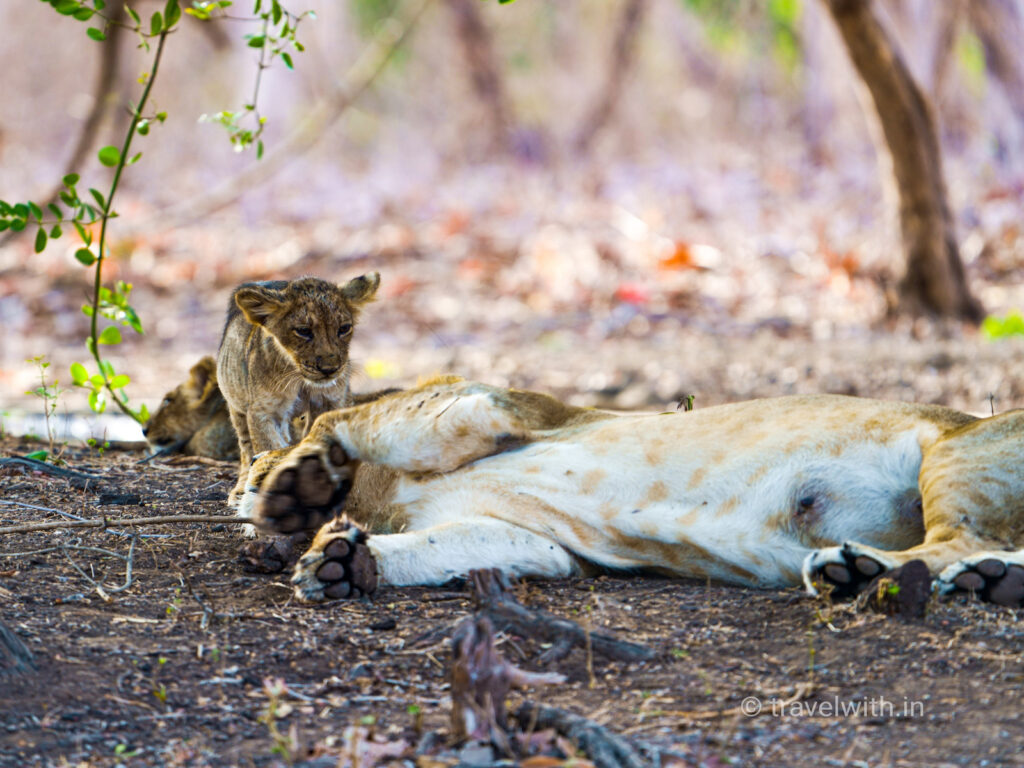
Belly fold in the Asiatic Lion
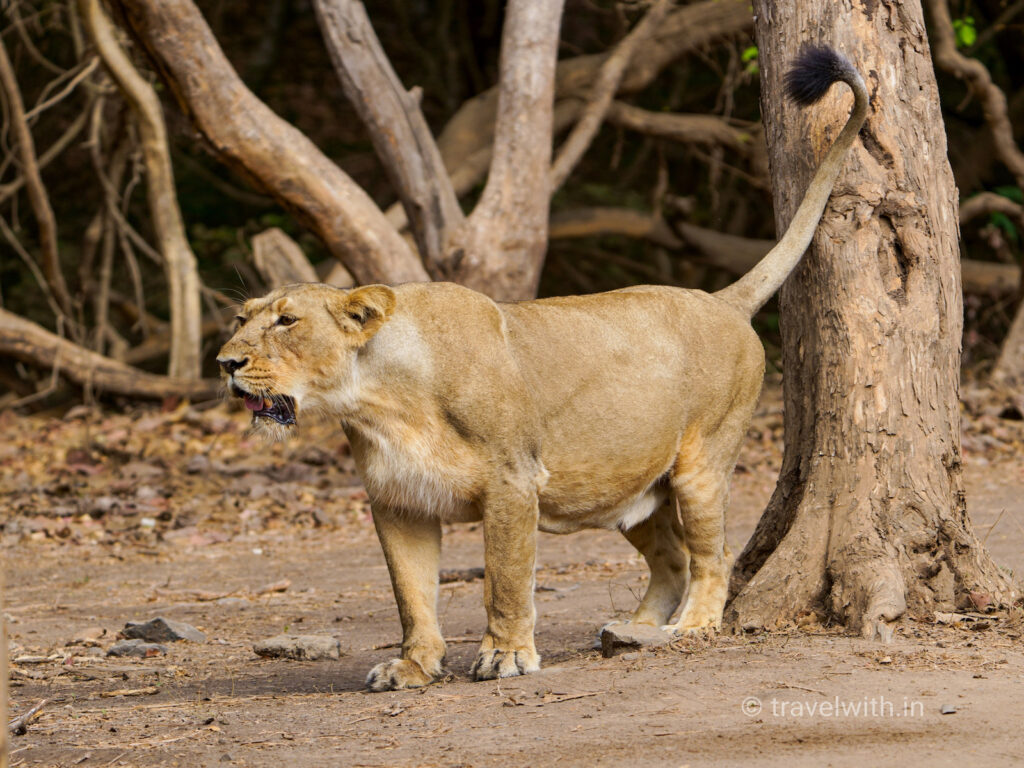
An Asiatic Lioness marking her territory
Scientists also claim that the Gir lion population was isolated (thus the in-breeding) from the mainland population of lions of the Indian sub-continent because the region (Saurashtra or South Gujarat) was geographically separated from the rest of the country by a strait some 300 years ago. Remnants of this strait are still around – the lowlands around Bhavnagar which is where the Blackbuck National Park is, Nalsarovar Lake and the salt lands of Little Rann of Kutch. Each of these regions has it’s own unique fauna and is definitely worth visiting.
Another visible difference between the two lion species is the mane in the male lions. The mane in the Asiatic lion is not as prominent – it’s not as full or long as that of the African lion making the Asiatic lion’s ears clearly visible.
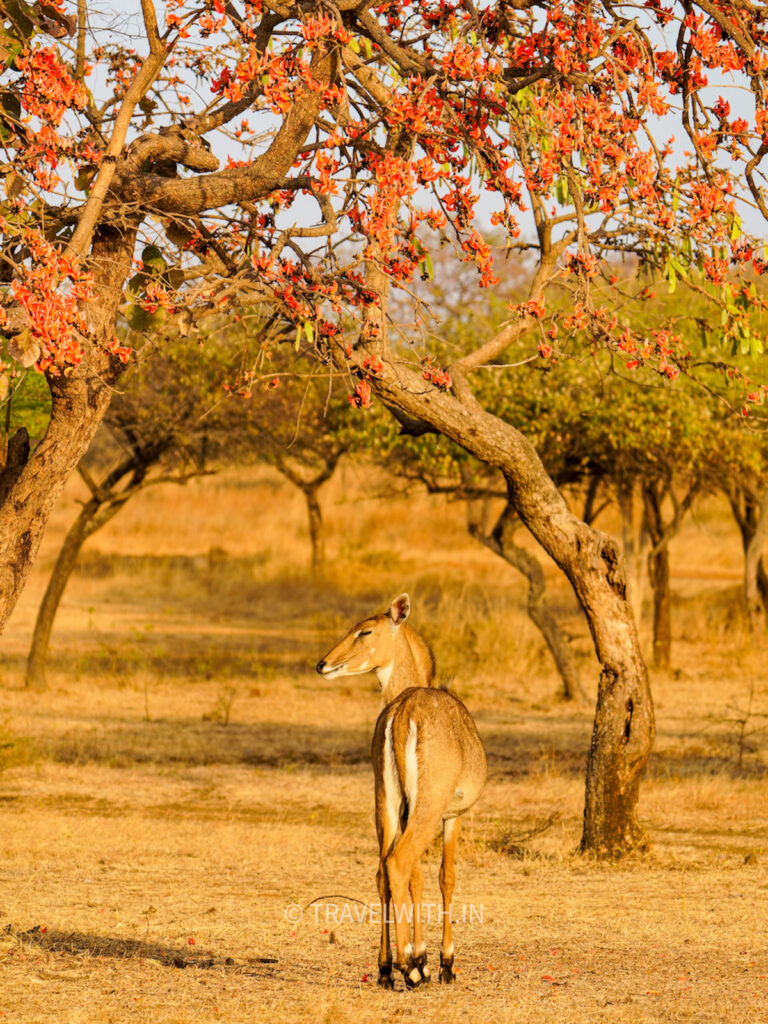
Nilgai under the Palash Tree
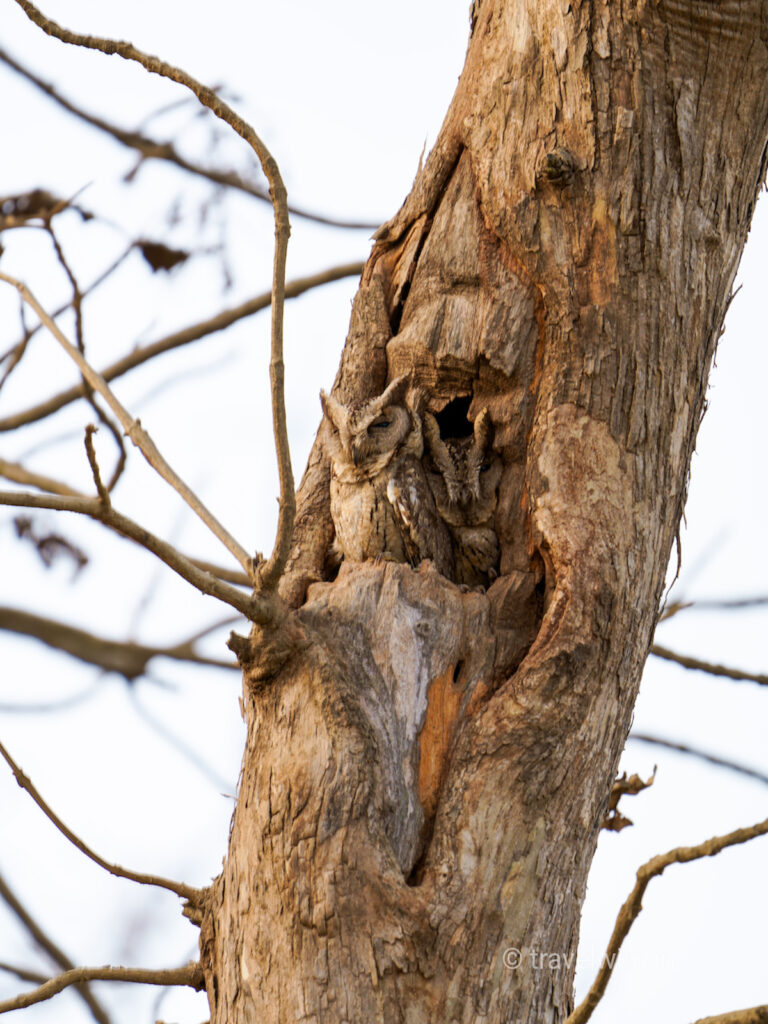
Pair of Indian Scops Owl
The closest major airport to Gir National Park is Rajkot. From Rajkot it’s a 3 hour drive to Gir. There is a flight from Mumbai to Keshod as well which makes Keshod the closest airport to the national park. If you have time, I recommend you fly in to Ahmedabad, stay for a couple of nights at the Blackbuck National Park and then make your way to Gir. From Blackbuck National Park, Gir is a 4-5 hour drive. Click here to know what makes Blackbuck National Park a worthy entrant in your Gujarat itinerary.
The tourism zone of Gir National Park has 13 safari routes which are randomly allocated when you book permits. Some routes intersect with each other while others do not. As with any wildlife safari, having a knowledgeable guide and an experienced driver is very important.
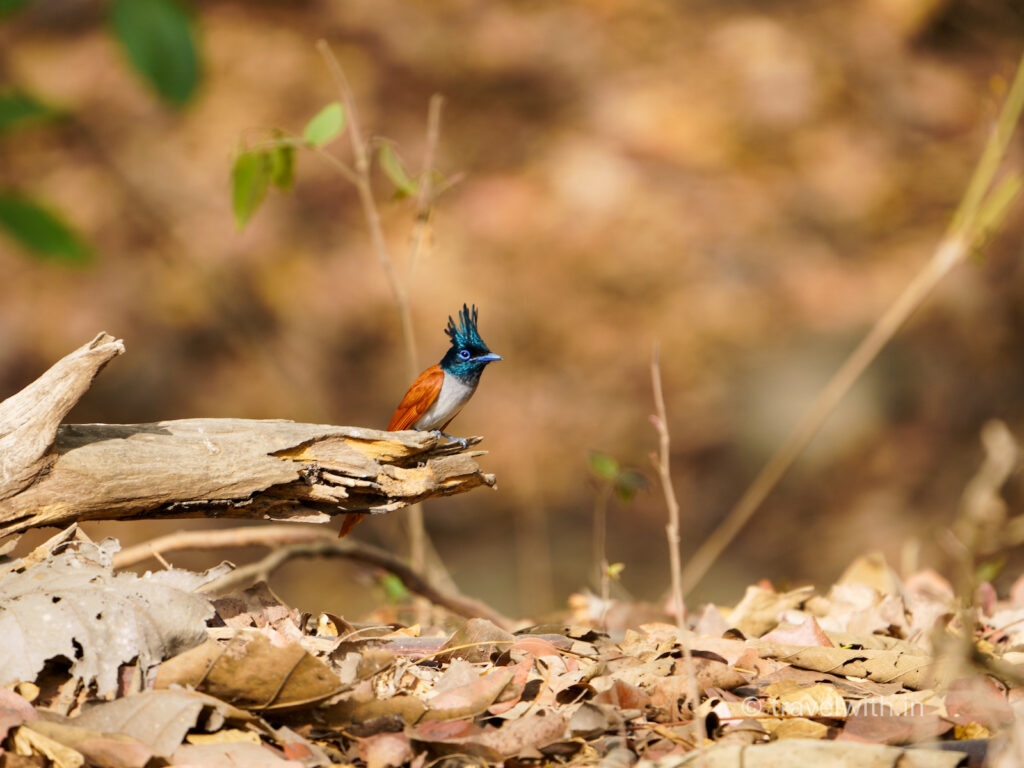
Indian Paradise Flycatcher
Asiatic Lioness of Gir National Park
Lions unlike tigers are known to be less shy of humans and vehicles. Moreover, the lions of Gir have grown up amongst human presence. This is because in the past, they had been baited i.e. fed by us, their natural prey base had depleted due to hunting and famine. So to keep their population going baiting was the only way forward. Another reason is that the national park and it’s borders are still home to the Maldhari (herdsmen) and Siddi tribal villages. Some of these villages have been inside the Park for centuries.
Siddis are descendants of the Bantu people from southeast Africa and majority of them came to the Indian sub-continent as slaves of the Deccan Sultanate. Today, the Siddi community has adopted local language and customs and are important members of the local community. Both the tribes claim that the lions of Gir recognize them by their outfits and behavior.
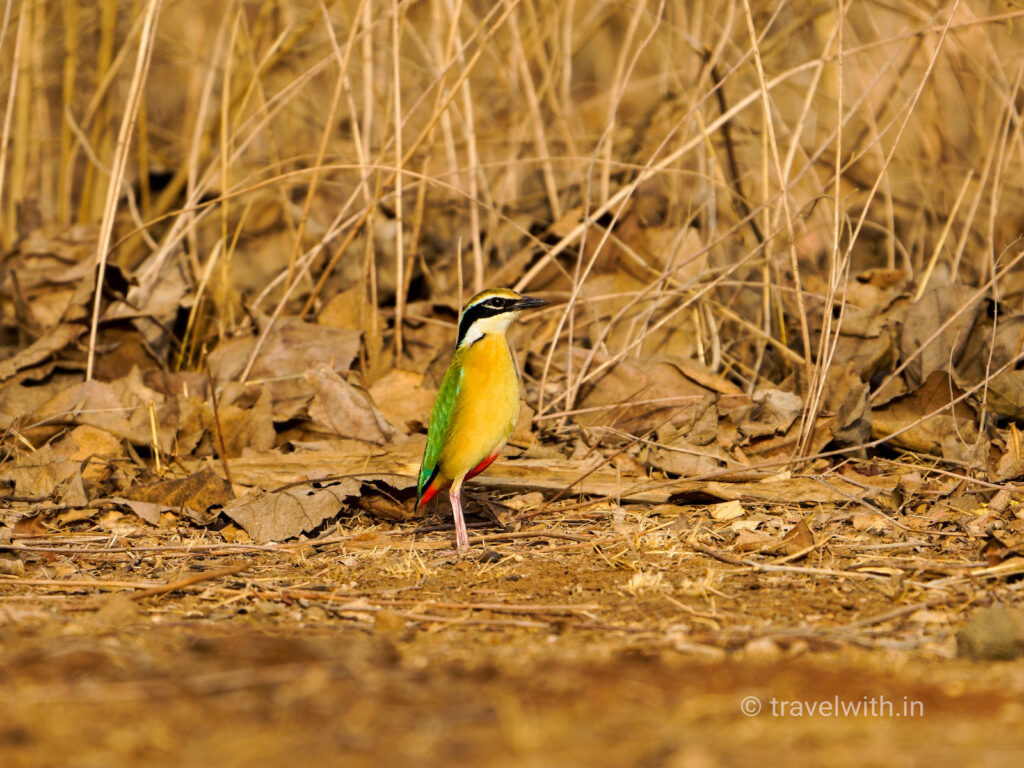
Indian Pitta
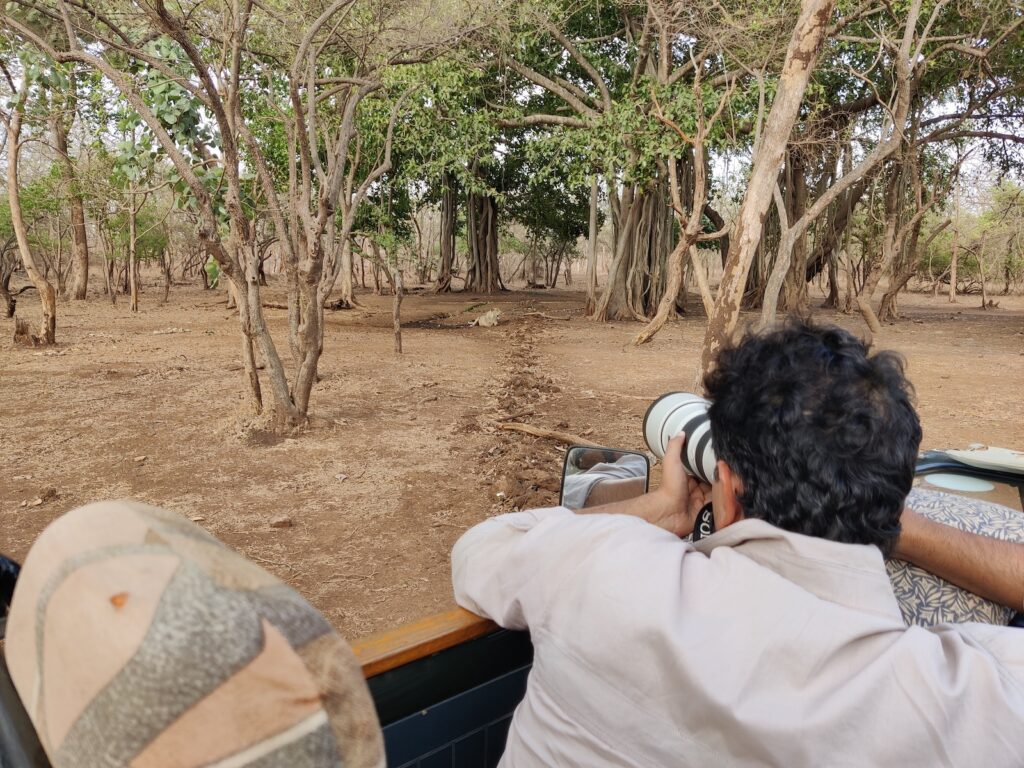
Summer Safari in Gir National Park
Unlike most national parks, Gir has three safari slots in a day: 6-9AM, 8:30-11:30AM and 4-7PM. The morning and afternoon safaris are more popular options for obvious reasons and permits for these two slots sell out much faster than they do for the mid-day safari slot. Safari timings may change from season to season.
Other than the safari in Gir National Park, you also have an option to go do an hour long safari in the zoo like Devalia which is spread across 412 hectares. Devalia has a few lions (besides other fauna) in large open enclosures. Some of these lions are known to have become troublesome hence the safari you do is in one of these caged vehicles or in a mini safari bus. Devalia Safari Park is closed every Wednesday and safaris can be done from 7AM to 6PM for an hour. This safari is more for those of you who do not have permits for the regular safaris or are on a tight budget and/or time.
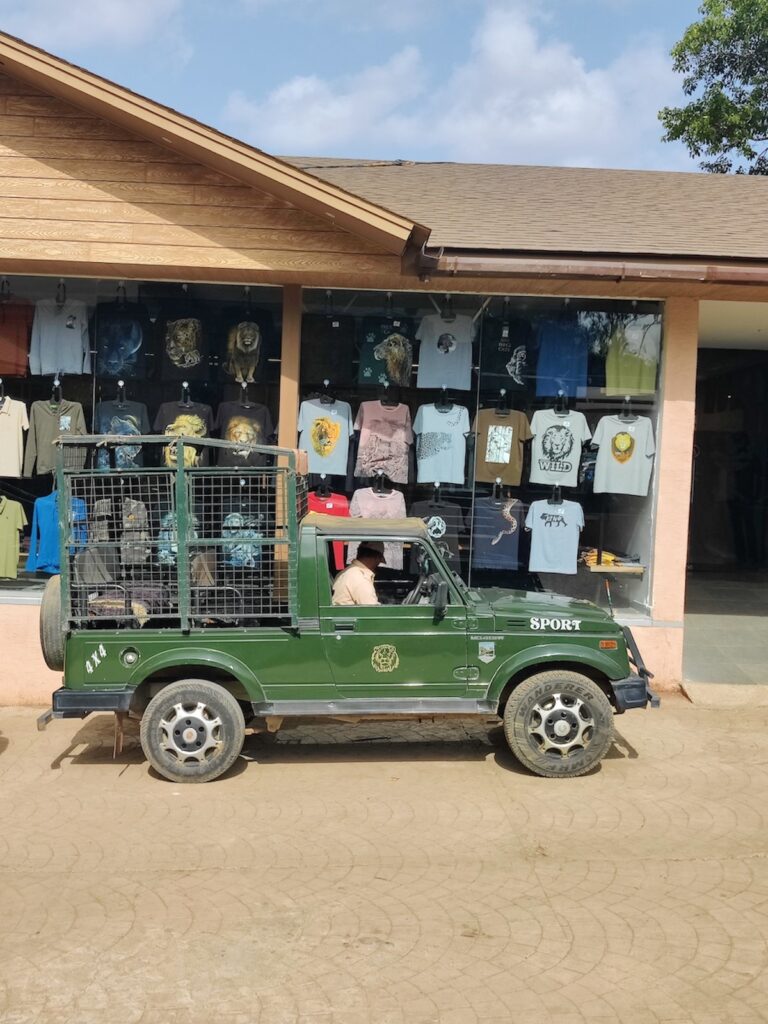
Devalia Jeep Safari Vehicle
Massive Male Asiatic Lion in Gir
Like most national parks and wildlife sanctuaries in India, Gir too closes for the monsoon i.e. from June 15 to October 15. In the winter months (November to February), the weather is cool but not as cold as it is in the North. This makes it an ideal time to visit Gir. However, if you want good visibility in the forest and are visiting for the purpose of photography then summer is when you should visit the national park. Prides of lions and other fauna spend most of their time near water bodies making it easier to spot them than in the winter season when the forest is lush green after the monsoon.
There are plenty of hotels in Gir meeting the demands of travelers with all kinds of budgets. You can find hotels in Gir from 70k a night to 5k or less a night too. When booking hotels it is advised to book a room with all meals as there are no decent stand alone restaurants.
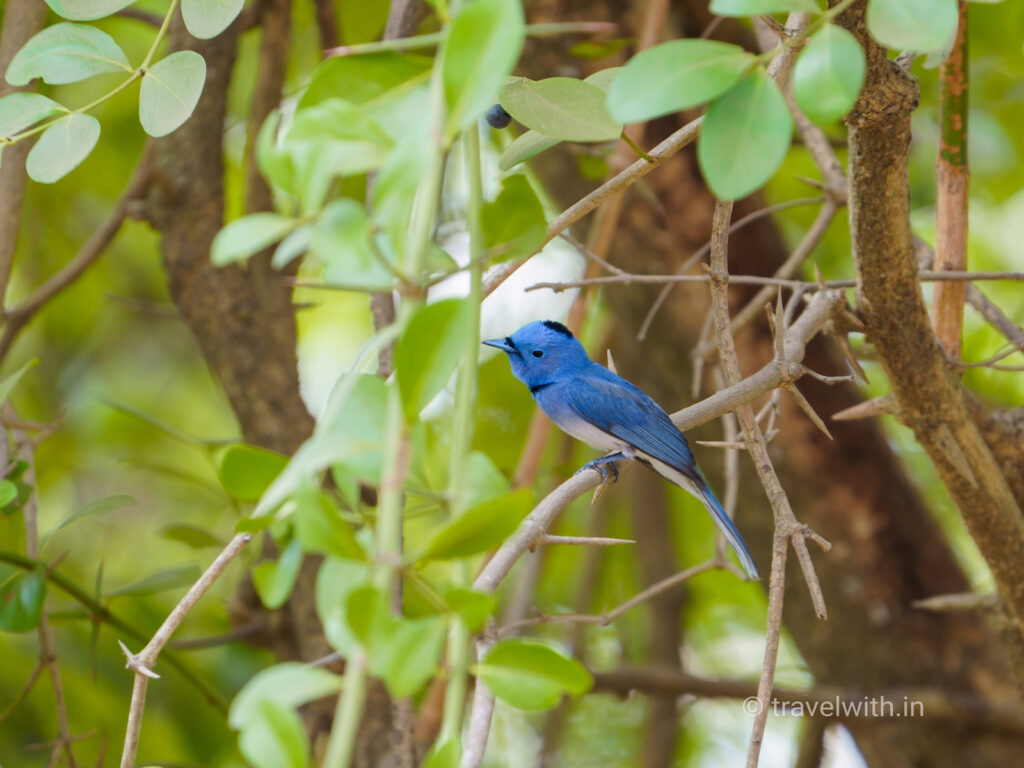
Black-naped Monarch
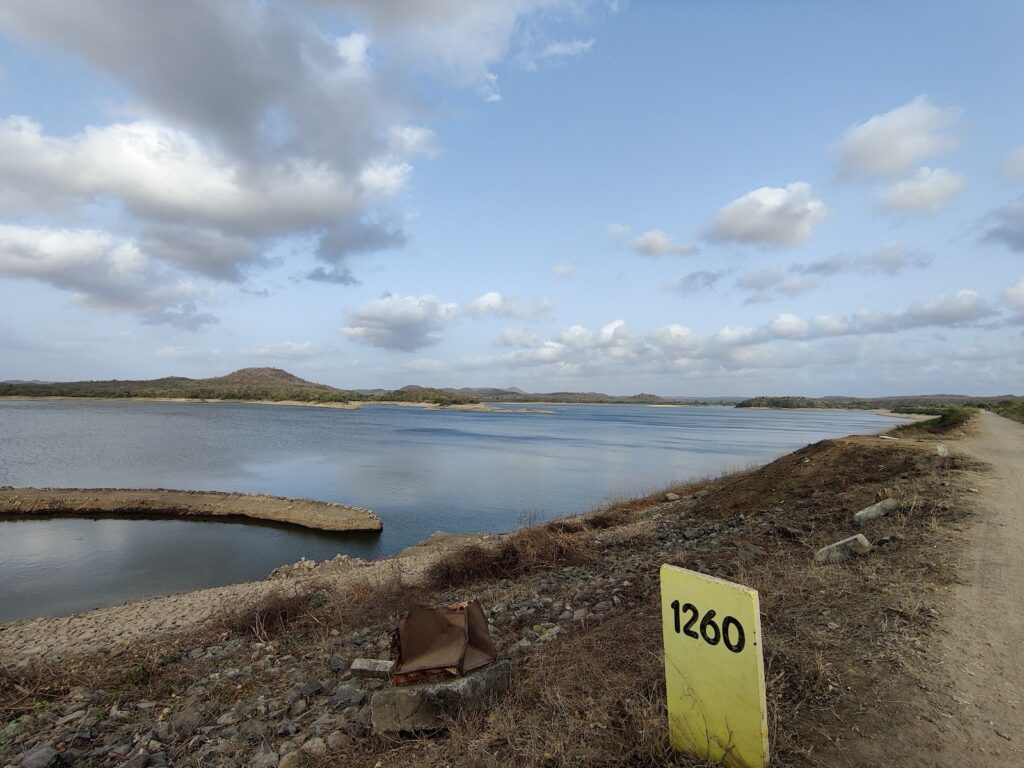
Kamleshwar damn in Gir National Park
If you’re not booking your safaris with me, be weary of agents who will give you 100% guarantee on lion sightings or those who pitch you the ‘night safari’. I’ve not personally witnessed it but I’ve heard that people who give you these guarantees use intrusive means to show you lions. I don’t know what those tactics are but I would strongly recommend you to not fall for this or the ‘night safari’.
There is no legally conducted night safari by the Government or Forest Department. Some lions venture in to mango farms which are on the border of the Park and that is where guests are shown lions at night for a fee. It is illegal and could be dangerous – stay away from these gimmicks. You can combine a visit to Gir with other stunning bio-diverse forests of Gujarat such as Blackbuck National Park in Velavadar for Indian Wolves and scores of Blackbucks or to the Little Rann of Kutch for Wild Ass and migratory birds.
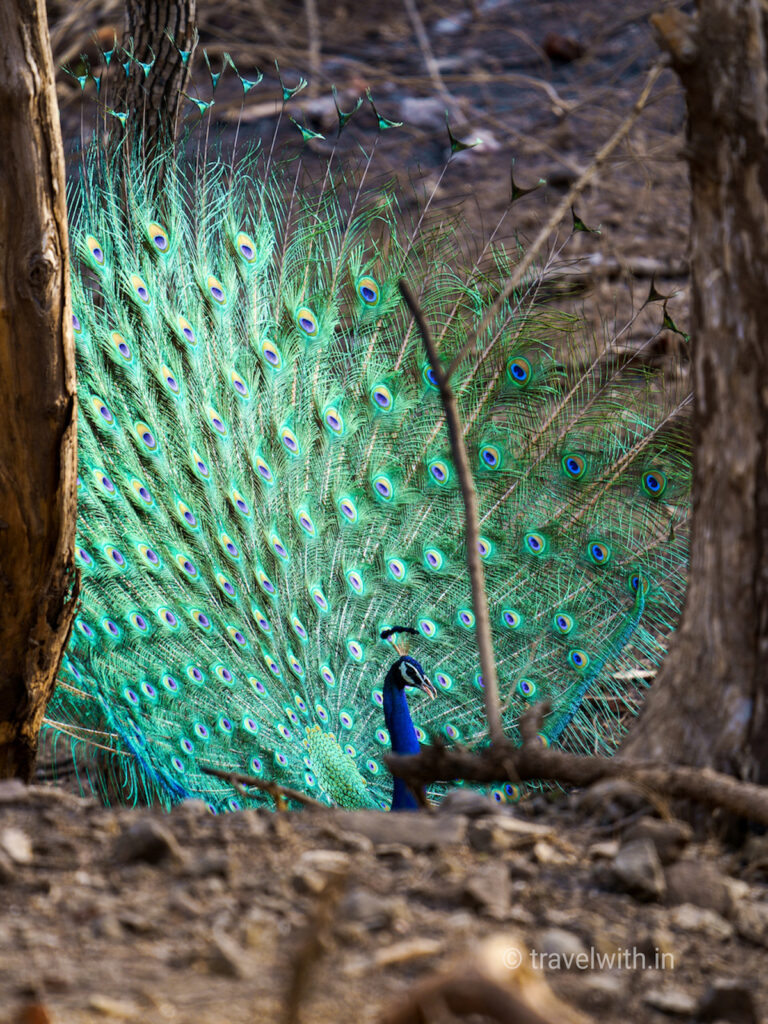
Mating dance of the Indian Pea-cock


